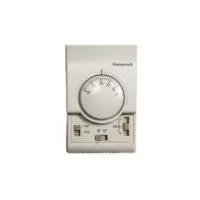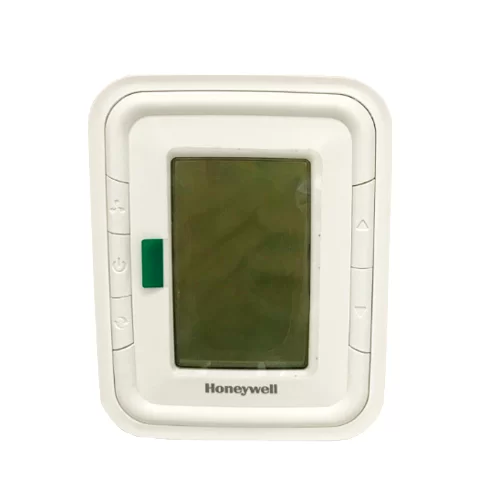Description
The T6373B1130 Honeywell Thermostat is designed to control the valve, or the valve and the fan in 2-pipe fan-coil applications. Honeywell T6373B1130 Thermostat operates an on/off valve to provide control at the desired set point temperature. Additionally, it is possible to control the fan from the thermostat.
In some cases, the wiring allows the fan to run continuously and you can switch it off using the system’s ON/OFF switch. In other models, you have the option of running the fan continuously or cycling it with the thermostat. We offer versions that come with a manual 3-speed fan switch, and versions that feature a system on-off switch.
In addition, certain versions of the thermostat allow for heat/cool changeover operation. This can be achieved either by manually operating the heat/cool switch located on the front of the thermostat, or through the use of a pipe thermostat installed on the supply water pipe of the fan-coil unit, which automatically accomplishes this function.
Features of Honeywell Thermostat T6373B1130
- Dual Diaphragm sensing element
- Attractive modern styling
- Heat anticipator
- Mounts directly on wall or conduit box
- Manual Control
- Auto Heat/cool changeover possible
- optional extracts
OPERATION
Sensing element
The thermostat sensing element comprises two circular, flexible metal plates welded together at the rims and encapsulating a gas/liquid combination whose pressure changes in response to variations in temperature.
This dual-diaphragm expands and contracts with ambient temperature changes to operate a snap-acting switch which controls the heating or cooling circuit.
Heat anticipator
To make sure that you achieve optimal performance, we also suggest that you keep the heat anticipator connected for both heating and cooling operations. Furthermore, this can help to maintain consistent temperature control and improve energy efficiency.
Location
The XE70N Series thermostat is the temperature control element in the fan-coil or air-conditioning system, and must be located in a position with good air circulation, on an inside wall about 1.5 m above the floor to sense the average temperature.
Avoid placing the thermostat in areas where draughts, hot or cold air sources, or radiant heat from the sun or other appliances could affect it.




















Reviews
There are no reviews yet.